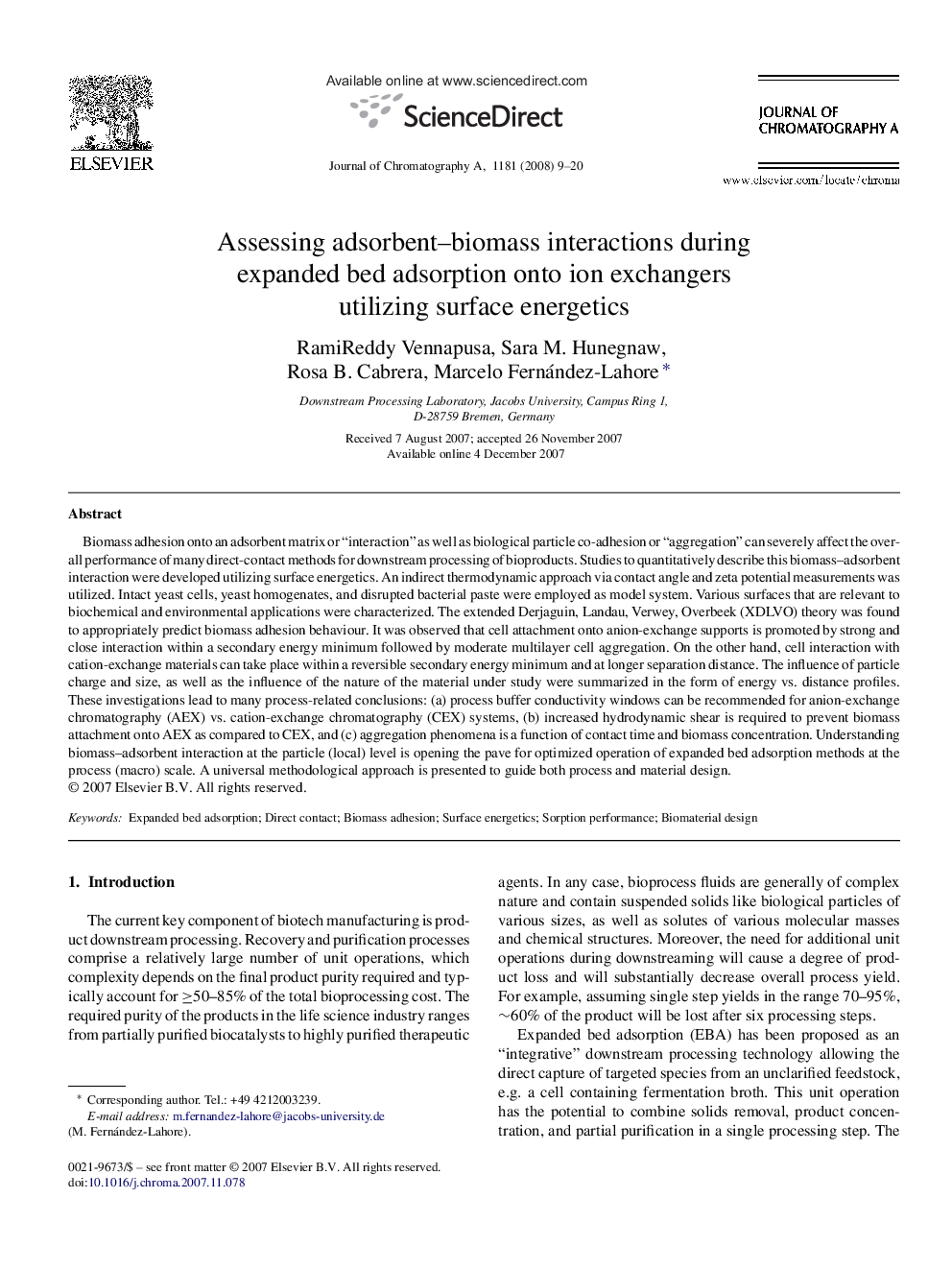| Article ID | Journal | Published Year | Pages | File Type |
|---|---|---|---|---|
| 1208311 | Journal of Chromatography A | 2008 | 12 Pages |
Biomass adhesion onto an adsorbent matrix or “interaction” as well as biological particle co-adhesion or “aggregation” can severely affect the overall performance of many direct-contact methods for downstream processing of bioproducts. Studies to quantitatively describe this biomass–adsorbent interaction were developed utilizing surface energetics. An indirect thermodynamic approach via contact angle and zeta potential measurements was utilized. Intact yeast cells, yeast homogenates, and disrupted bacterial paste were employed as model system. Various surfaces that are relevant to biochemical and environmental applications were characterized. The extended Derjaguin, Landau, Verwey, Overbeek (XDLVO) theory was found to appropriately predict biomass adhesion behaviour. It was observed that cell attachment onto anion-exchange supports is promoted by strong and close interaction within a secondary energy minimum followed by moderate multilayer cell aggregation. On the other hand, cell interaction with cation-exchange materials can take place within a reversible secondary energy minimum and at longer separation distance. The influence of particle charge and size, as well as the influence of the nature of the material under study were summarized in the form of energy vs. distance profiles. These investigations lead to many process-related conclusions: (a) process buffer conductivity windows can be recommended for anion-exchange chromatography (AEX) vs. cation-exchange chromatography (CEX) systems, (b) increased hydrodynamic shear is required to prevent biomass attachment onto AEX as compared to CEX, and (c) aggregation phenomena is a function of contact time and biomass concentration. Understanding biomass–adsorbent interaction at the particle (local) level is opening the pave for optimized operation of expanded bed adsorption methods at the process (macro) scale. A universal methodological approach is presented to guide both process and material design.
